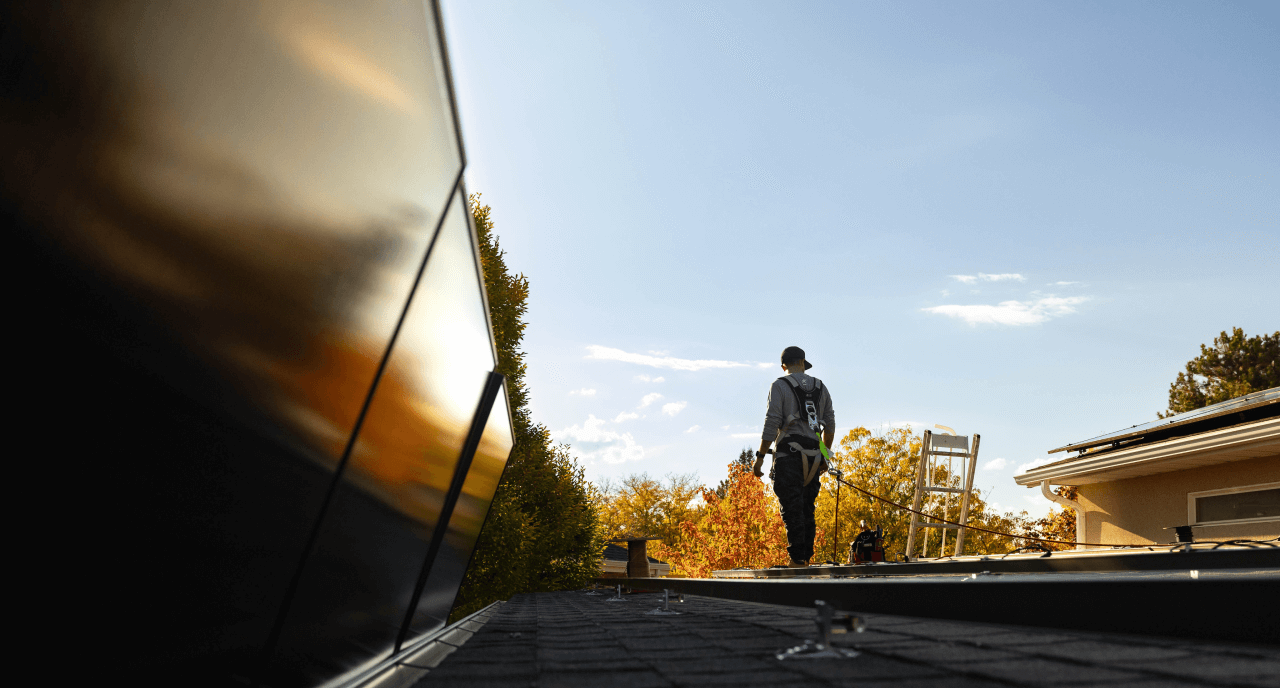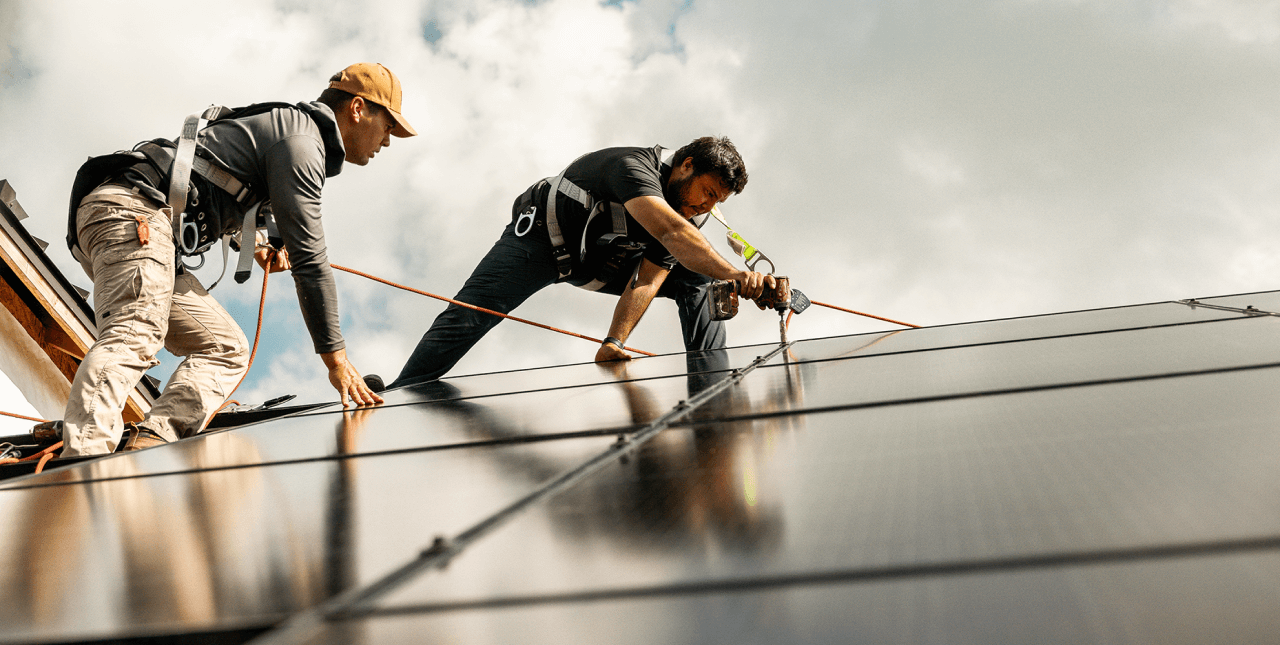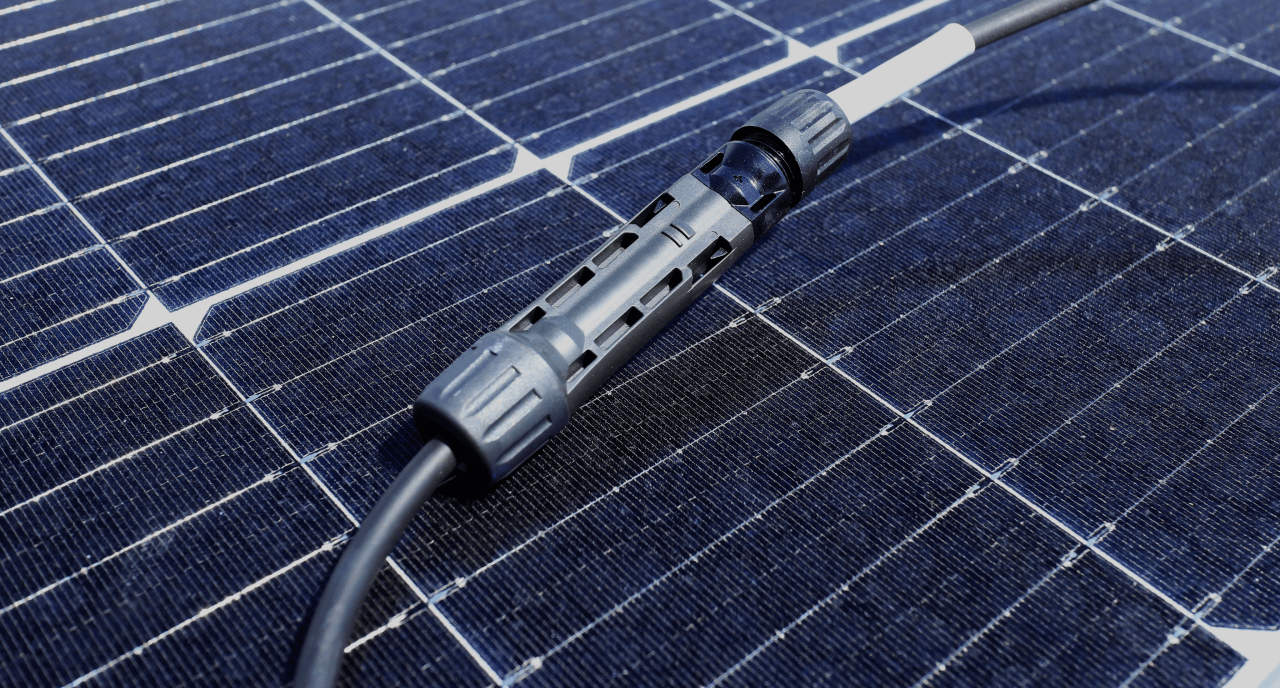From Solar Power to Elecricity in Your Home
From Solar Power to Elecricity in Your Home
Last edited May 10th, 2022

After your home panel design is approved, permits are filed, all the necessary materials are ready and all contracts are signed, it's finally time for installation!
On installation day, we'll check your roof again to make sure everything is in order—making sure tiles and shingles are all in their right place and securely attached. We will run the needed wires, install racking for the supports, place your panels on the racking, and turn on your inverters. You might wonder, as many do, how does the power from those freshly installed panels get into your home?
We see power lines everywhere on a daily basis, so we're all familiar with the idea of those wires carrying power to our homes. Wherever you are, you could probably look outside and see some right now.
Let’s start with a breakdown of direct current power (DC) and alternating current power (AC) and why that difference matters when we're talking about powering your home with solar energy.
Direct Current vs
Alternating Current
Those power lines we see outside run AC, or “alternating current”, electricity, which is the same current that comes from your home's outlets. The power running through the overhead lines may be similar in its state, but it is cranked up to about 7,000 times the strength needed to run your vacuum so it can make the trip all the way to your home from the power plant which is miles away.
Your solar panels on your rooftop generate DC, or "direct current" power. Solar cells produce a linear electrical current—meaning that the current moves in a straight line. As the sun shines down on your solar panels it stimulates the flow of electrons in the same direction, but your home runs on alternating current power which is quite different.
Your home was originally built to draw power from the grid, which pulls power all the way from a power plant through miles and miles of cables, so using AC makes sense because AC power can travel longer distances with less degradation.
Since your power plant is now on your roof, your panels generate energy for your home and inverters help convert your solar generated DC power into usable AC power.
Currently three types of inverters dominate the market and are available to homeowners. They are:
- String (or central) inverters
- Power optimizers + inverters
- Micro Inverters

String Inverters
String inverters are the most common inverter homeowners have. String inverters are also known as central inverters, and they work by connecting (or stringing) all your panels to one single inverter. After your direct current electricity goes through a DC junction box and a DC isolator, it will run through the inverter to be converted to alternating current electricity.
String inverters have been on the market longer than any other inverter. This makes them a tried-and-true, reliable option compared to other inverters which haven’t been around as long. They tend to be the most affordable option for solar inverters. String inverters are typically located on the side of your home allowing easy access so they can be monitored, repaired, or replaced if needed.
Installing some sort of protection such as critter guards is another great way to maintain your solar panels and maximize their efficiency and life span.
String Inverters
String inverters are the most common inverter homeowners have. String inverters are also known as central inverters, and they work by connecting (or stringing) all your panels to one single inverter. After your direct current electricity goes through a DC junction box and a DC isolator, it will run through the inverter to be converted to alternating current electricity.
String inverters have been on the market longer than any other inverter. This makes them a tried-and-true, reliable option compared to other inverters which haven’t been around as long. They tend to be the most affordable option for solar inverters. String inverters are typically located on the side of your home allowing easy access so they can be monitored, repaired, or replaced if needed.
Power Optimizers + Inverter
Power optimizers connect to the back of each individual solar panel and work alongside a string inverter to make sure your panels are cranking out the correct amount of wonderful, clean energy. If you only have string inverters and one of your panels is shaded, then the whole system output is cut. With power optimizers, this is not the case. They condition the DC energy of each individual panel which decreases the impact of shading on individual panels. If one of your panels is shaded, the others will be unaffected.
These power optimizers also allow for individual panel monitoring, so if you have any issues with your solar panels we can assess and determine which one is causing the problem much easier. Power optimizers do cost a bit more than a string inverter alone, but they can be well worth it to ensure the efficiency of your solar panels.
Micro Inverters
Micro inverters are pretty new to the solar scene, and offer the most up-to-date solar technology in the market. Micro inverters are attached to the back of each individual solar panel. As the panels generate direct current power it runs through the micro inverter which converts it to alternating current power on the spot—which is pretty cool.
Micro inverters are the most efficient at optimizing solar energy output. Having micro inverters attached to the back of your solar panels allows the system to be minimally impacted by shading on individual panels. If shade covers one panel, only that panel will produce less power output instead of the whole system’s output decreasing, and they make it easy to expand your panel system in the future. Any additional panels just need a micro inverter installed on the back and they are ready to be plugged into your system.
Similar to power optimizers, micro inverters also allow for individual solar panel monitoring. While they may be one of the more expensive solar inverter options out there, the benefits far outweigh the cost—especially if shading is an issue for your home.
Not a Standard Saturday DIY Project
There are many DIY solar kits you can purchase, but in the end a trained professional electrician is the best choice to help with your solar installation. An electrician will evaluate your home’s current electrical wiring to assess if it is in need of any updates or repairs. Many homes have electrical systems that are decades olds and will need to be upgraded when installing solar panels. Old electrical systems are a hazard to your home and need to be evaluated by an experienced professional.

Components of your solar set up
If you use string inverters, your energy will go from your solar panels to a DC junction box. The junction box protects the electrical connections from the weather and protects you from accidental electrical shocks. From the junction box your power goes to a DC isolator which is used to manually disconnect modules in a solar PV system in order to repair or perform general maintenance on your system. Then your power will go through the string inverter to convert your DC power into AC power, and then on through the meter and circuit breaker.
After the circuit breaker your power is pushed to another junction box called the consumer junction box to protect the vulnerable wiring and connections from the weather or accidental contact. From this junction box your power is finally sent to your home for your everyday energy needs.
Phew...as you can tell with all of those tedious connections, it’s definitely best to have an experienced, insured and trained electrician to check all the inner workings of your solar system installation.
The job of the electrician is a critical part of the solar installation process. To learn more about the electrical ins and outs of your system and much more, contact one of our solar experts today.
Ready to see if Lumio is right for you? Our teams are standing by to help. Switch to solar today!
